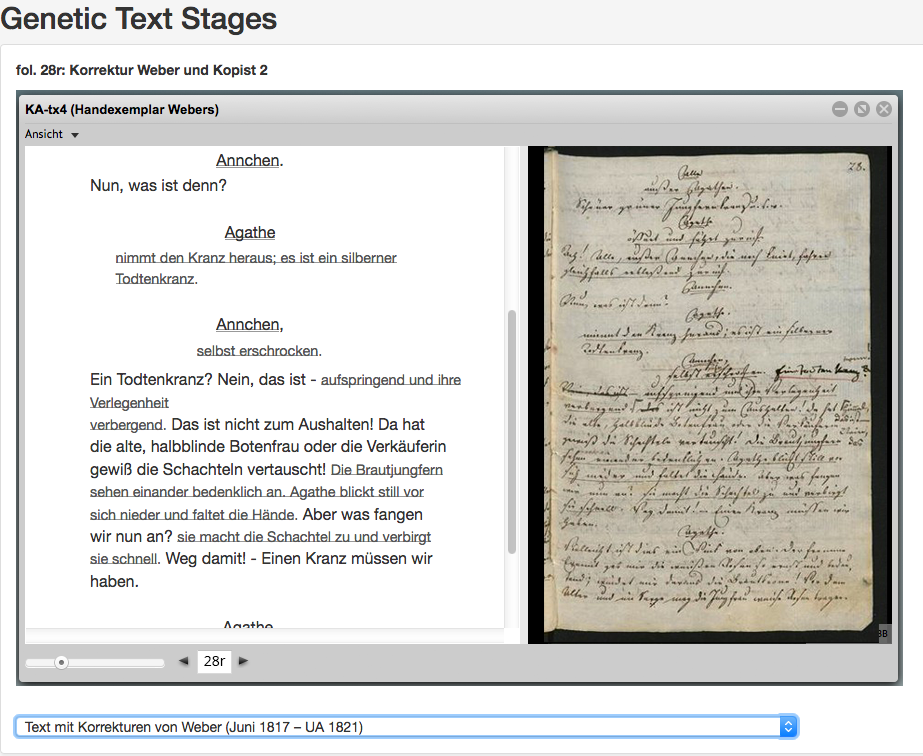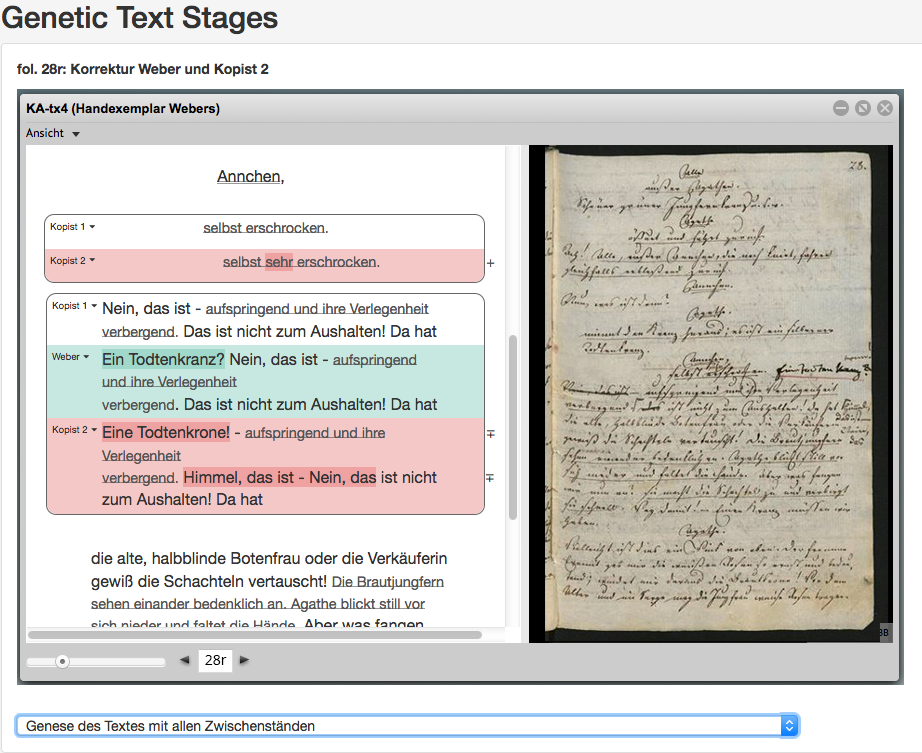
Libretti Demo 1
Display of Text Layers / Genetic Text Stages

Demo: Display of Text Layers / Genetic Text Stages
The display of text layers can be accessed from any available source window (but only in the manuscript libretti with multiple text layers!).
This demo displays, for example, the text layers for Weber’s personal copy of the libretto text (KA-tx4), where five different text layers can be differentiated:
- 1st text layer = copy by Dresden copyist 1 (June 1817)
- 2nd text layer = copy by Dresden copyist 1 with Weber’s corrections (from June 1817 to the premiere in 1821)
- 3rd text layer = copy by Dresden copyist 1 with Weber’s corrections as well as corrections made anonymously (presumably for the premiere in 1821)
- 4th text layer = copy by Dresden copyist 1 with Weber’s corrections as well corrections made anonymously and by Dresden copyist 2 (beginning of 1822)
- 5th text layer = copy by Dresden copyist 1 with Weber’s corrections as well as corrections made anonymously and by Dresden copyist 2, and additions by Jähns (September 1878)
The individual text layers are superimposed; so, for example, since all the Weber and anonymous interventions date from earlier, they were tacitly adopted by copyist 2 (if he did not cancel them) and became part of his text layer.
Each of the five text layers can be selected separately via the menu to show in black and white the respective text version of the libretto as a diplomatic flow text without referring to genetic textual development.

Demo: Display of Text Layers (showing all Intermediate Stages)
Selecting “Genesis of the Text with all Intermediate Stages” from the menu displays this development by showing the five different layers of text subsumed in one view.
Correction procedures in the individual layers can be identified as follows:
Text lines with all corrections located in one layer are colored using either the default color scheme or otherwise arbitrarily-selected colors for individual text layers. All corrections related in content are combined within a framework. The different text layers displayed can be folded in and out.
- 1st text layer by copyist 1 (white)
- 2nd text layer by copyist 1 with Weber’s corrections (green)
- 3rd text layer by copyist 1 with both Weber’s corrections as well as those made anonymously (yellow
- 4th text layer by copyist 1 with Weber’s corrections as well as those made anonymously, and corrections by copyist 2 (red)
- 5th text layer by copyist 1 with Weber’s corrections, those made anonymously and by copyist 2, and additions by Jähns (brown)
The specific components of the correction are highlighted in the colored text lines in somewhat darker shades of the color selected for the text layer.
When a correction is made over several lines, the relevant larger sections are marked in the respective selected color, ignoring the line break.
Additional information about the individual correction procedures is given within the framework. Indicated at the start of the line is the respective text layer plus the abbreviation for the type of procedure (+ for addition, - for deletion, - / + for substitution). Using a tooltip, more detailed explanations of the correction procedure can be accessed as required (what was corrected by whom, when, and where).
The functions displaying and/or describing the individual text layers are implemented in Edirom Online in the following manuscript libretto sources, apart from the display of the “Genesis of the Text with all Intermediate Stages:” L-tx2, KA-tx4, K-tx6, KA-tx15, KA-tx21, as well as K-tx29.
Direct link to the text-layers demo.
See also demo 2: Annotation display (for single sources) and demo 3: Text-variance display (covering all sources).